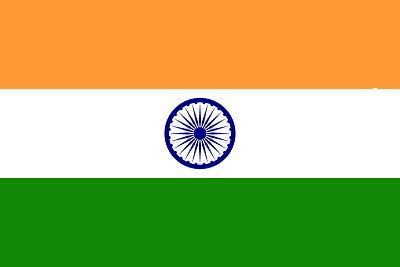Indian National Symbols
National symbol of India means national identity elements of India. National symbols are the reason of its unique identity and heritage which bring a sense of pride and patriotism in the heart of Indian citizens. National symbols of India help in making a unique image of it to the world. There are various national symbols with their unique meaning such as national animal (tiger) symbolizes the strength, national flower (lotus) symbolizes the purity, national tree (banyan) symbolizes the immortality, national bird (peacock) symbolizes the elegance, national fruit (mango) symbolizes the tropical climate of country national song and national anthem symbolizes inspiration, national emblem (four lions) symbolizes power, courage, pride and confidence, etc.
Various national symbols have been chosen to project the specific image of country, reflect people’s mind towards its culture as well as show its positive attributes to the world. Following are the mentioned national symbols with their details:
National Flag of India
Indian national flag is a horizontal rectangular shape divided in tricolor bands of equal proportion (also called as the Tiranga). The topmost band is of deep saffron color (represents courage), middle one is white color (represents purity) and lowermost band is of green color (represents fertility). The middle white band contains a navy blue wheel (also called as Dharma Chakra or the Wheel of Law) having twenty-four spokes in the center. It is called as the Ashoka Chakra. The Indian national flag is designed by the Pingali Venkayya based on the Swaraj flag.
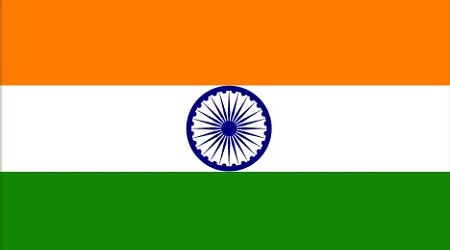
The present form of Indian national flag was officially adopted as an official flag of the Dominion of India by the Constituent Assembly in a meeting on 22nd of July in 1947. A flag is made by using a special type of hand-spun cloth called Khadi by law. Flag Code of India governs the usage and display of flag and prohibits the usage of flag by private citizens except on national days. The flag is solely manufactured by the Karnataka Khadi Gramodyoga Samyukta Sangha from of 2009. The standards of manufacturing a flag were created in 1968 however updated in 2008. there are nine standard sizes of the flag has been specified by the law.
National Emblem of India
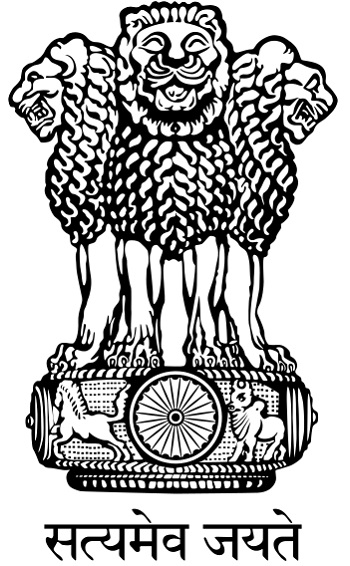
Lion Capital of Asoka at Sarnath has been adopted by the Indian Government as the National Emblem of India. It was adopted on 26th of January in 1950 when India became a republic. Lion Capital of Asoka is written with a quote in Devanagari script called “Satyameva jayate” (represents truth alone triumphs) taken from Mundaka Upanishad, (part of sacred Hindu Vedas).
Lion Capital of Asoka contains four lions standing with their joint back on a pillar. It also contains Dharma Chakra (Wheel of Law) in front of the structure. This graphic representation was originally placed by the Emperor Ashoka in 250 BCE at the Buddhist site, Sarnath to mark the great place of Gautam Buddha where he gave first lesson of Dharma. Emblem of India symbolizes power, courage, pride, and confidence. There is a horse and a bull on each sides of the Wheel. The State Emblem of India Act, 2005 regulates and restricts the usage of Emblem. The original Lion Capital of Asoka is preserved in the Varanasi at Sarnath Museum.
National Anthem of India
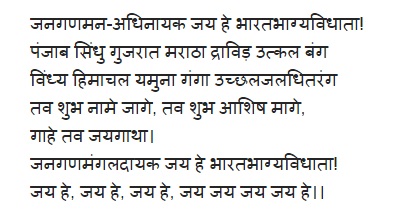
Jana Gana Mana was officially adopted as national anthem of India by the Constituent Assembly on 24th of January in 1950. It was written by the Rabindranath Tagore (a famous Bengali poet, artist, playwright, philosopher, composer and novelist). It was first sung at a Calcutta session of Indian National Congress in 1911 on 27th of December. Because of some political reasons, “Jana Gana Mana” was decided to be adopted as National Anthem instead of “Vande Mataram”. It is sung at the celebration of all national events of India. It takes fifty-two seconds on its complete formal rendition however its shortened version (contains first and last lines) takes only 20 seconds to play. Later it was translated by the Rabindranath Tagore from Bengali to English and given music in Madanapalle.
National Song of India
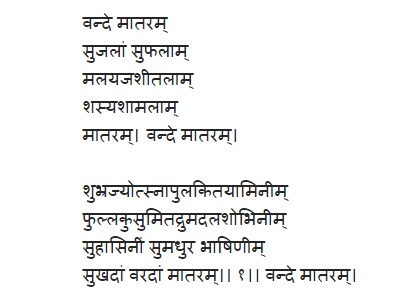
The first two verses of the original Vande Mataram song was officially adopted as the National song of India in 1950. The original song of Vande Mataram contains total of six stanzas. It was written by the Bankim Chandra Chatterjee in Bengali and Sanskrit in 1882 in his novel Anandamath. This song was written him in Chinsurah (a city in the state of West Bengal, located at Hooghly River, 35 km north to the Kolkata, India). Vande Mataram song was first sung by the Rabindranath Tagore in a political context of the Indian National Congress in 1896. It was translated to the verse form known as “Mother, I Salute to Thee” by the Sri Aurobindo Ghose in 1909.
National Calendar of India
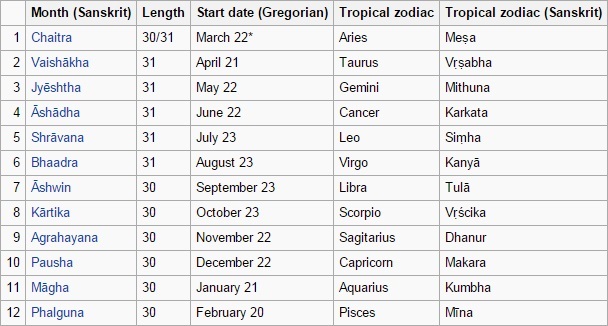
Saka calendar was Adopted as the national calendar of India on 22nd of March in 1957 when it was introduced from Nepal Sambat by the Calendar Reform Committee. This calendar is based on the Saka Era. Dates of this Calendar are almost similar to the Gregorian Calendar Dates. Saka calendar was first officially used on Chaitra 1, 1879, Saka Era, or 22nd of March in 1957. Head of the Calendar Reform Committee (Astrophysicist Meghnad Saha) and other members were tasked to prepare an accurate calendar to get adopted all through the country.
National Pledge of India

An oath of allegiance was adopted as the national pledge of India by the Republic of India. Generally the oath is recited by Indians jointly in the public events and students at national events (Independence Day and Republic Day) celebrations in their schools and colleges. It is found printed in the school textbooks in the opening pages.
It was originally written by the Pydimarri Venkata Subba Rao ( an author and a bureaucrat) in Telugu language in 1962. First it was read in the Visakhapatnam in 1963 in a school. Later it was translated to various regional languages accordingly. The practice of reciting it in the schools was introduced in 1965 on 26th of January after getting decided in the meeting of the Central Advisory Board on Education in 1964, Bangalore under its chairman M. C. Chagla.
National Flower of India
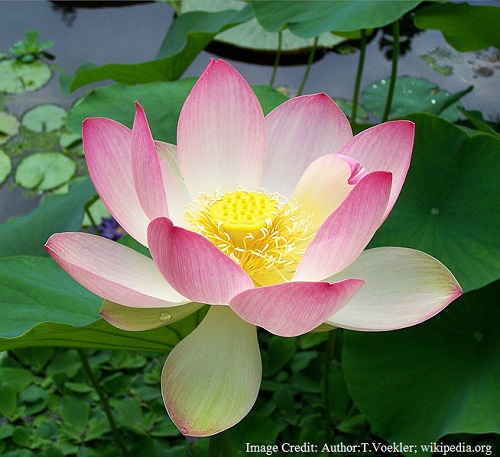
Lotus (botanical name is Nelumbo nucifera) is a sacred Indian flower has been adopted as the national flower of India. This flower has been given a unique position from the ancient time in the Indian art and mythology. It represents the cultural pride and traditional values of India all over the world. It also symbolizes the fertility, knowledge, prosperity, honor, long life, good fortune, purity of hearth and mind. It is often used for the religious practices all over the country.
National Fruit of India
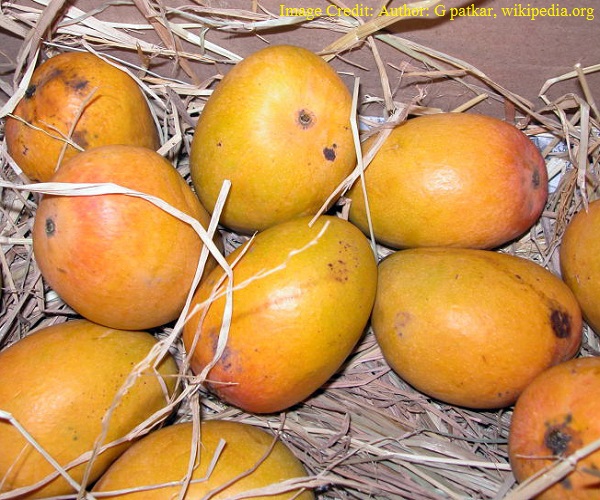
Mango (botanical name is Mangifera indica) fruit is called as the king of all fruits. It was originated in India and has its more than 100 varieties in various sizes, shapes and colors. This juicy fruit has been adopted as the National fruit of India. It is cultivated in almost all regions of India. It has its historical values and significance in various mythological tales of India. It has been praised by the various popular Indian poet in their own languages.
It is the rich source of vitamin A, C and D provides various health benefits to the people. The taste of it was liked by the Alexander and Hieun Tsang. It is considered that almost 1 lac of mangoes tree were planted in Lakhi Bagh by the great Mughal emperor, Akbar all around the territory of Darbhanga (means a modern Bihar). An International Mango Festival is held every year in Delhi where various Indian varieties of mangoes are seen.
National River of India

Ganga is the most sacred and longest river of the India (covering around 2,510 km of mountains, valleys and plains). It is heavily populated river basin of the world. Ganga river has its great religious significance in Hinduism from the ancient time. It is worshiped as the Goddess by the people of Hindu religion and its sacred water is used at many important occasions. The origin of Ganga river is as the Bhagirathi River in the snowfields of Gangotri Glacier in the Himalayas. River Ganga has been adopted as the national river of the India. It is counted as the third largest river by discharge and empties into the Bay of Bengal, the northeastern part of the Indian Ocean.
National Tree of India
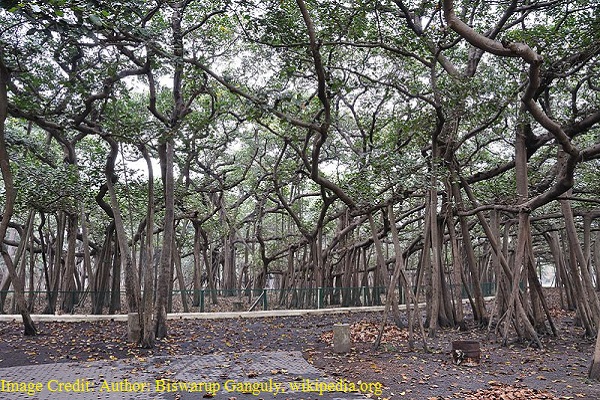
Indian banyan tree (botanical name Ficus bengalensis) has been adopted as the national tree of India. It is considered as the immortal tree because it has capability to grow new plants in a very large area through its roots themselves. It has great characteristic of longevity and tree of significance from the ancient time in India. Its huge branches provides nice shelter to its many neighbors. while its roots are even stretched to several acres. Its long branches, deep roots and strong trunks form a tangle which survives for a long time more than any other tree. It is famous for its longevity and big shelter. It is described its significance in many ancient stories. It is found all through the nation and generally planted near to the temples and roadsides.
In villages it becomes the nice gathering place for Panchayats and other meetings. It is a sacred tree in Hinduism and has lots of medicinal values as it helps in treating many diseases. According to the Hindu mythology, it is considered as the Lord Shiva was used to of sitting under it and gave teachings to the saints that’s why it is worshiped by the Hindu people. It is named as the Kalpavriksha in Sanskrit and considered as the divine tree that fulfills wishes of people. There is a tradition of worshiping this tree especially by the married Hindu women wishing a long and happy married life. A banyan tree may be so big around 656 feet in diameter and 98 feet tall. It produces rubber from the sticky milk which is generally used in the gardening.
National Animal of India
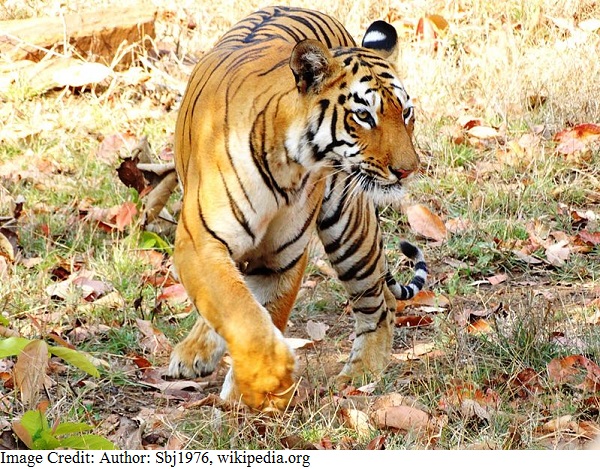
Royal Bengal tiger (zoological name is Panthera tigris tigris), is a largest carnivore only found in the Indian subcontinent, has been adopted as the national animal of India. It is an animal having bright yellow color strips. It runs freely in the Mangrove forests and symbolizes enormous power, strength and pride of India. It is found in all regions of India (eight native species) except north-western region. More than half population of tigers of the world are found in India only. The government of India has banned the royal sport of game hunting because of the reducing number of tigers in India to a great extent. And a Project Tiger was also launched by the Indian government to provide protection and save tigers in April 1973. In India, 23 tiger reserves have been made for their safety and protection from getting endangered. The lifespan of tiger is about 20 years long.
National Aquatic Animal of India
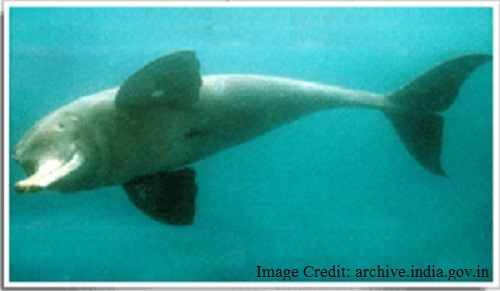
Gangetic dolphin (zoological name is Platanista gangetica) has been adopted as the national aquatic animal. It represents the purity of holy Ganga River because it survives only in the pure and fresh water. River Dolphin is a mammal means it gives birth to a child. Its long pointed snout and visible teeth on both jaws are very clear. It has no lens in its eyes. It has thick body and light grey-brown skin. Female Dolphins are tend to be larger than male dolphins. It makes a noise while breathing that’s why also called as susu. Generally it is found in the rivers like Ganges, Meghna and Brahmaputra in India, Bhutan, Bangladesh (Karnaphuli River), Nepal, etc. and the in Bangladesh. The number of dolphins are decreasing day by day (less than 2000 because of the fishing and habitat degradation due to decreasing water flow, pollution, construction of dames, pesticide, physical barriers, etc) and counted as the critically endangered species of India. It is considered as one of the oldest creatures in the world. In order to protect them conservation works have been started on the Sanctuary Areas.
National Bird of India
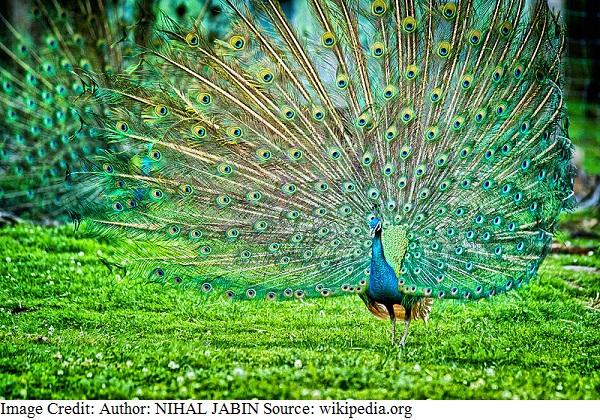
Indian peacock (zoological name is Pavo cristatus) has been designated as the national bird of India. It is native to the Indian subcontinent and represents unity of vivid colors and Indian culture. It symbolizes prettiness, pride and holiness. It has a big fan-shaped crest of feathers and an elongated, slender neck. Male peacocks are more colorful and beautiful (having 200 lengthened feathers) in comparison to the female species (without tail). They become happy and spread their elongated feathers in attractive manner whenever monsoon comes. Female peacocks are brownish in color and have small size than male peacocks. Male peacocks do pretty dance by spreading their feathers and looks wonderful. Peacocks have their own religious significance and given protection on parliamentary decree under the Indian Wildlife (Protection) Act, 1972. Peacock are found in almost all regions of the country. Peacock is considered as vehicle of the lord Muruga in Hinduism and symbol of “Resurrection” in the Christianity. Peacock hunting has been banned in India.
National Currency of India
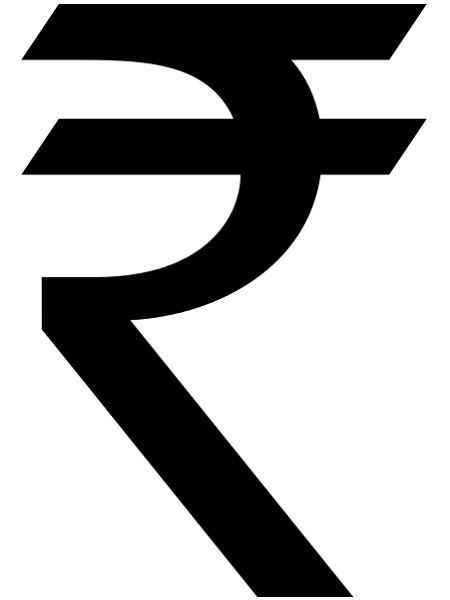
Indian Rupee (ISO code: INR) is officially the currency of the Republic of India. The Reserve Bank of India controls the issue of the Indian currency. is controlled by the. The Indian rupee is symbolized as “र” (Devanagari consonant) and Latin letter “R” which was adopted in 2010. The coins in India with rupee symbol was launched on 8th of July in 2011. A website named Paisa Bolta Hai has been launched by the RBI in order to raise awareness among people of India about the fake currency.
National Game of India
Hockey is the national game of India. From 1928 to 1956, it was a peak time for India when it won 8 Olympic gold medals in 6 consecutive wins. Dhyan Chand was the best Indian hockey player of all time. He is still remembered for his extraordinary goal-scoring accomplishments. He had won three Olympic gold medals (in 1928, 1932, and 1936) by playing hockey. It was golden period for India when he was playing hockey. In 1948, he played his final international match and scored more than 400 goals.
National Days of India
Independence day, Gandhi Jayanti and Republic day of India has been declared as the national days of India. Independence day is celebrated on 15th of August every year because at this day India got freedom from the British rule on 15th of August in 1947. Republic day of India is celebrated on 26th of January every year because at this day the Indian Constitution came into force on 26th of January in 1950. Gandhi Jayanti is celebrated every year on 2nd of October to celebrate the birth anniversary of Mahatma Gandhi. All the national days are celebrated as the gazetted holidays all over the India.


